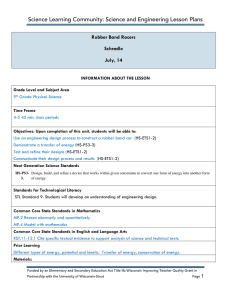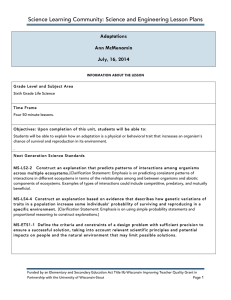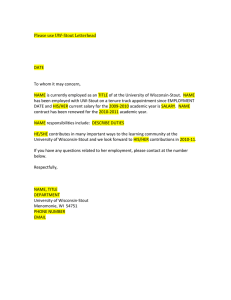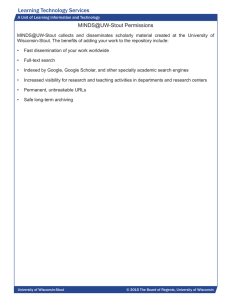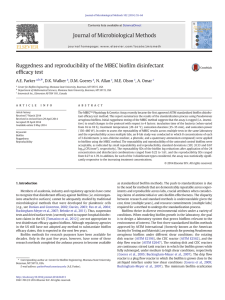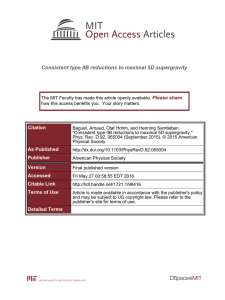Science Learning Community: Science and Engineering Lesson Plans Aura Lea Carrell
advertisement
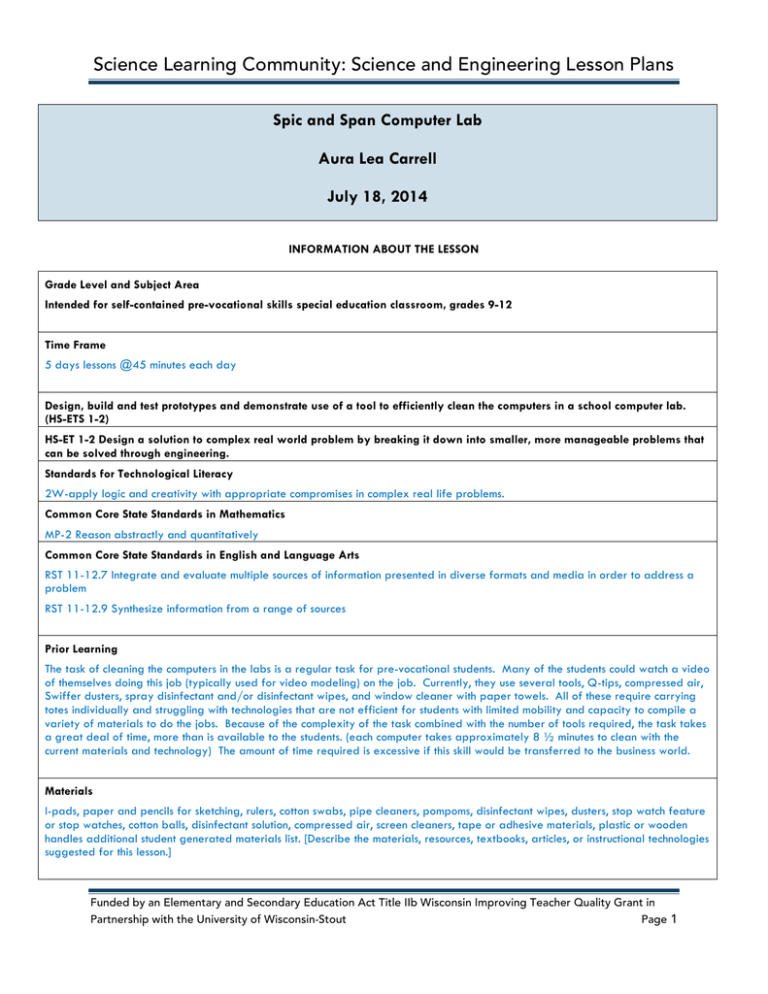
Science Learning Community: Science and Engineering Lesson Plans Spic and Span Computer Lab Aura Lea Carrell July 18, 2014 INFORMATION ABOUT THE LESSON Grade Level and Subject Area Intended for self-contained pre-vocational skills special education classroom, grades 9-12 Time Frame 5 days lessons @45 minutes each day Design, build and test prototypes and demonstrate use of a tool to efficiently clean the computers in a school computer lab. (HS-ETS 1-2) HS-ET 1-2 Design a solution to complex real world problem by breaking it down into smaller, more manageable problems that can be solved through engineering. Standards for Technological Literacy 2W-apply logic and creativity with appropriate compromises in complex real life problems. Common Core State Standards in Mathematics MP-2 Reason abstractly and quantitatively Common Core State Standards in English and Language Arts RST 11-12.7 Integrate and evaluate multiple sources of information presented in diverse formats and media in order to address a problem RST 11-12.9 Synthesize information from a range of sources Prior Learning The task of cleaning the computers in the labs is a regular task for pre-vocational students. Many of the students could watch a video of themselves doing this job (typically used for video modeling) on the job. Currently, they use several tools, Q-tips, compressed air, Swiffer dusters, spray disinfectant and/or disinfectant wipes, and window cleaner with paper towels. All of these require carrying totes individually and struggling with technologies that are not efficient for students with limited mobility and capacity to compile a variety of materials to do the jobs. Because of the complexity of the task combined with the number of tools required, the task takes a great deal of time, more than is available to the students. (each computer takes approximately 8 ½ minutes to clean with the current materials and technology) The amount of time required is excessive if this skill would be transferred to the business world. Materials I-pads, paper and pencils for sketching, rulers, cotton swabs, pipe cleaners, pompoms, disinfectant wipes, dusters, stop watch feature or stop watches, cotton balls, disinfectant solution, compressed air, screen cleaners, tape or adhesive materials, plastic or wooden handles additional student generated materials list. [Describe the materials, resources, textbooks, articles, or instructional technologies suggested for this lesson.] Funded by an Elementary and Secondary Education Act Title IIb Wisconsin Improving Teacher Quality Grant in Partnership with the University of Wisconsin-Stout Page 1 Science Learning Community: Science and Engineering Lesson Plans LESSON IMPLEMENTATION Objective: Upon completion of this lesson, students will be able to: Reduce the number of tools required (with development of new improved tool) to clean computers which will reduce the time needed to accomplish the task. Pre-Assessment 1. 2. Review individual video modeling on I pads Clean a computer and time that task Procedures Time Instructional Strategies/Learning Tasks Day 1 1. View video of students doing the task (cleaning one computer in the lab) and time the task completion from the video 2. Brainstorm problems with that process and compile on smartboard using both pictures and words 3. Time individual students completing the task (live) 4. Add to list generated using guiding questions such as, Which part took longest? Etc. Day 2 1. 2. 3. 4. 5. Day 3 1. 2. 1. Review current tools and current problems from previous day. Ask students to identify which component of task is their strength and which needs the most work. Introduce the model of design from middle school Boston Model. Show video clips from You-tube on improvement of familiar products Group students with strong + Weak in specific component and ask them to imagine the type of tool that would make them all good at each component of the task. Have them draw a picture of themselves doing that component with their idea. Re group them so that each has an opportunity to be in the strength and weakness position. Generate a list of materials that would be needed to try their idea to improve their component of the task and compile group list Purpose Student engagement/Introduce problem Concrete activity to be more authentic (tied in with employment eval rubric for productivity) and give opportunity to use skill of timing mechanism. Grouping Introduce context for problem Design process instruction Build a model of their tool for the individual component, test it, change it to improve it and have a peer try it out and give feedback for improvement. (satisfies a portion of the employment rubric) Make a poster to demonstrate their portion of the task to teach the rest of the class to use this. Refine process by generating ideas of how to combine tools to user fewer to do the whole task more efficiently and compile. Funded by an Elementary and Secondary Education Act Title IIb Wisconsin Improving Teacher Quality Grant in Partnership with the University of Wisconsin-Stout Page 2 Science Learning Community: Science and Engineering Lesson Plans Day 4 2. Build prototype of combination Test prototypes and make improvements Final assessment, time performance of whole task with prototype Day 5 Formative Assessment Running record of compilation of group work/coupled with regular vocational weekly assessment Group notebook with brainstorming lists and sketches available to whole class since they are not independent readers. Summative Assessment Time each individual and video them using the newly developed tool for the whole task, tied with their weekly employment evaluation rubric Funded by an Elementary and Secondary Education Act Title IIb Wisconsin Improving Teacher Quality Grant in Partnership with the University of Wisconsin-Stout Page 3
![Science Learning Community: Science and Engineering Lesson Plans [LAVA] [Donnie Tate] [2014/2015]](http://s2.studylib.net/store/data/010793284_1-9e7d1c3b282257f042882e0024c27371-300x300.png)
